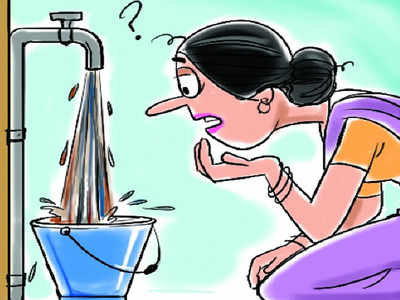The Hindu 03.11.2014
Water tariff increased across the board
Think before you water your garden or wash your car with
a hosepipe. Water has become dear after Bangalore Water Supply and
Sewerage Board (BWSSB) increased the tariff across the board effective
from Sunday.
For the first time, all components of
water tariff have been linked to consumption levels, with an aim to
incentivise conservation of water.
While average
domestic consumers will have to put up with a 20 per cent hike in
tariff, those who exceed the average consumption levels will now feel
the pinch as the tariff hike for this section is around 67 per cent.
The
BWSSB, which has hiked water tariff after nine years, said in a press
release that the move was necessary to bridge the revenue-expenditure
gap and losses accumulated over the years. The decision to hike water
tariff was taken at the October 20 board meeting.
Of
the three components of the water bill — water charges, service charges
and sanitary charges — service charges were Rs. 20 across the board for
domestic connections. Now, even this has been linked to water
consumption and can go up to Rs. 150. Sanitary charges, which were
earlier 15 per cent of the water charges, have been hiked to 25 per
cent. The minimum water bill for a domestic connection has gone up to
Rs. 100 from the earlier Rs. 83.
Apartment complexes
and group housings in the city that have bulk water supply connections
have to now cough up Rs. 22 a kilolitre (kl) of water against Rs. 19 a
kl earlier. The tariff for bulk water supply to industrial areas,
including Kempegowda International Airport, has been hiked by about 30
per cent.
Non-domestic
A
steep tariff increase has also been effected for non-domestic commercial
connections. The minimum bill for a non-domestic connection has been
hiked from Rs. 360 to Rs. 500.
The BWSSB has altered
the consumption slabs based on which it bills consumption for
non-domestic connections. It has brought down the slab for consumption
for maximum tariff from 100 kl to 75 kl. Tariff has been increased
around 30 to 40 per cent across all consumption slabs.


